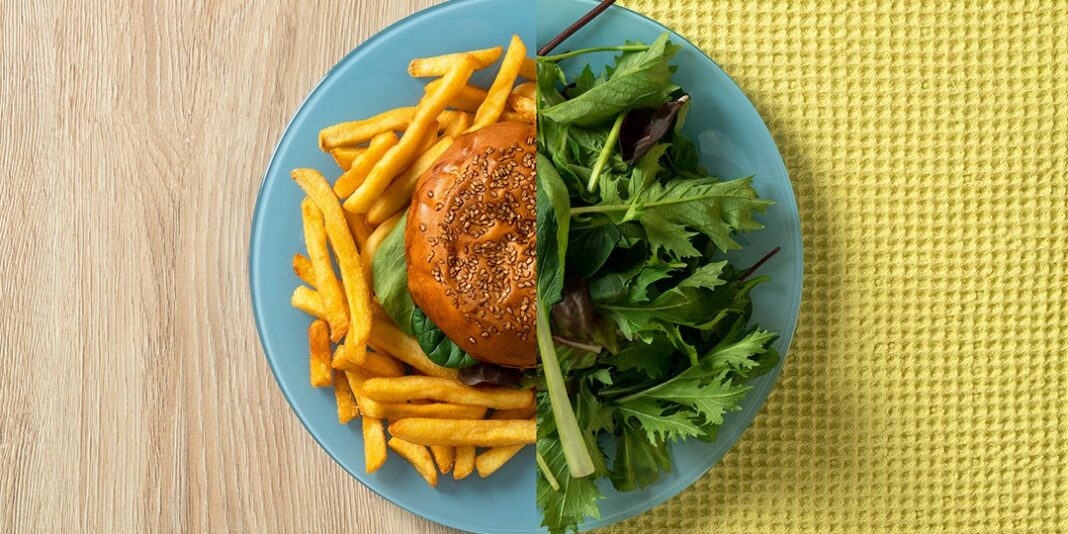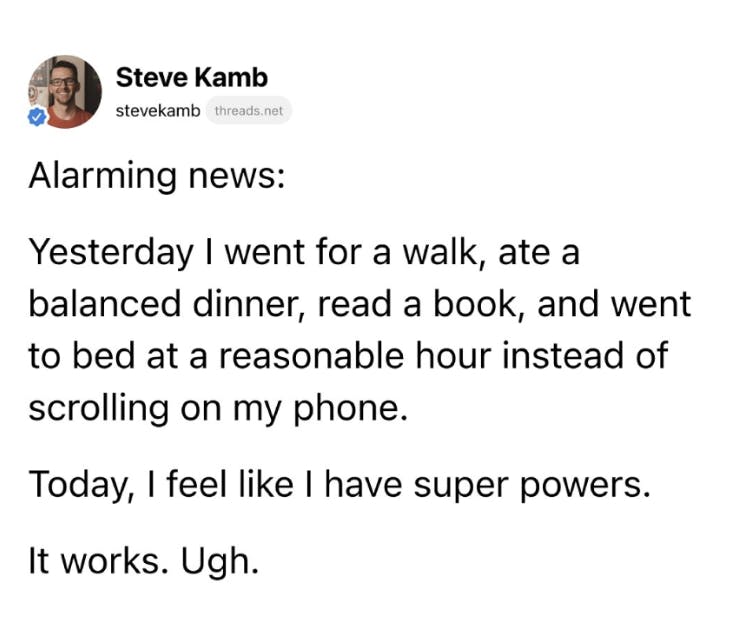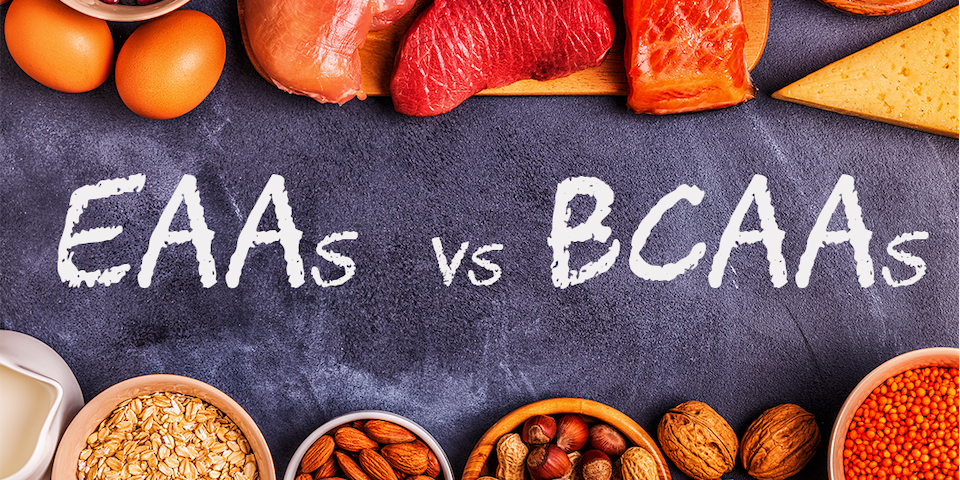If you’re on a quest for more muscle mass, you’ve probably heard of bulking. As the name suggests, that’s when you force-feed extra calories, usually over a set period, in a concentrated effort to muscle up. There are two major approaches to bulking up: “clean” and “dirty.” So let’s learn the difference between a dirty bulk and clean bulk.
The terms are a little clunky: By nature, no food is clean, dirty, good, or bad. Any food — from cookies to plain water — can be helpful or detrimental depending on when and how you consume it. So rather than using the terms dirty bulk vs. clean bulk, it may be better to say “aggressive” or “conservative” bulk.
That said, most trainers define the terms in the following way:
- In a “clean” bulk, an athlete eats large amounts of primarily whole, minimally processed foods. They consume large quantities of vegetables and fill out their menu with high-calorie carbohydrates and fats, like dairy products, rice, grains, pasta, potatoes, starchy vegetables, and olive oil.
- In a “dirty” bulk, the athlete consumes processed, highly palatable foods: burgers, fries, pastries, ice cream, milkshakes, fried chicken, doughnuts, candy, and other calorie-dense foods.
How does each approach work, and which one is best for you? Let’s look at the pros and cons of a dirty bulk vs. clean bulk.
“Clean” Bulking

The cons
Bad news first: A clean bulk is hard. Everything that makes whole, nutritious foods an advantage for people trying to lose weight (it’s filling, high in fiber, and nutrient-dense) makes it challenging when you’re trying to increase caloric consumption.
“It’s way harder to force down tons of chicken breasts and salad than it is to overeat chips and doughnuts,” says Angelo Poli, ISSN Master Trainer and the creator of the MetPro App.
The pros
On the other hand, a clean bulk is healthier than a dirty bulk — and that’s important because overeating of any kind is taxing on your body.
“Your entire digestive system has to work harder to process all the calories you take in,” says Poli. As blood sugar rises, your digestive tract goes into overdrive. When you’re bulking clean, you’re doing so on foods that are overall more heart-healthy and beneficial for fitness results and general wellbeing.
The clean bulk menu
Clean bulking is very similar to moderate eating — you just ignore all restrictions on portion size. So your typical lunch would look something like this:
- A large portion of a protein (steak, fish, chicken).
- A double serving of carbs (rice, pasta, potatoes).
- A half-plate of salad or veggies with extra portions of oil and vinegar.
Fat is your friend when bulking, so aim for richer protein sources like beef, bacon, whole milk, and whole eggs. Nuts and nut butters of all kinds — high in healthy fats and protein — are a great choice, as is trail mix, bags of which should take up residence in your glove box and desk drawer at work.
“Dirty” Bulking

The pros
For people who have trouble gaining weight, a dirty bulk can work wonders. After sometimes years of trying to gain weight on low-calorie foods, many lighter lifters have found that a few Twinkies, French fries, and fast-food burgers are just what they need to get the scale moving.
At first glance, the dirty bulk sounds fun: After a lifetime of avoiding junk food, you can now eat however much you want. Many people jump at the chance.
Burgers, fries, and milkshakes are calorie-dense and delicious, and they don’t fill you up the way whole, unprocessed foods do, so it’s easy to get several hundred extra calories in at one glorious sitting.
The cons
But the fun wears off quickly, and before long, eating that much food becomes a chore. In addition, dirty bulking can be unhealthy, especially if you allow “fun” foods to replace — rather than supplement — conventional ones.
Over time with continuous unhealthy habits, your health can take the brunt of the impact, and you might eventually start to experience things like elevated blood sugar, triglycerides, and cholesterol, in addition to more body fat accumulation than lean mass.
And without essential nutrients provided by unprocessed foods, you might feel run-down and unmotivated to work out.
Perhaps most challenging of all, dirty bulking can be tough to stop once you’ve started. Ultra-processed foods are engineered to be delicious and easy to consume — and hard to stop once they’ve become a regular part of your diet.
“I’ve seen it happen again and again,” says Poli. “A client starts dirty bulking. They gain weight, but they become addicted to the fun foods at the same time.”
The dirty bulk menu
The best approach to a dirty bulk is to add some processed foods to a clean bulk diet. To the meal described above, a “dirty” bulker might add a heavy dessert like pie, ice cream, and whipped cream.
For breakfast, you might have an omelet with six eggs and veggies — plus sour cream and cheese. On the side, you might add some chocolate milk, orange juice, and a doughnut or two. Between meals, eat trail mix that includes chocolate or M&Ms, burritos, milkshakes, and more doughnuts. Enjoy processed foods like Pop-Tarts, Oreos, and Chips Ahoy? Go crazy.
When to Bulk Clean, and When to Bulk Dirty

Given the potential health risks to chronic overeating, it’s best to bulk as cleanly as you can. Start increasing portion sizes on any calorie-rich foods you usually eat:
- More carbs (potatoes, bread, pasta, rice).
- More fats (butter, cream, milk, egg yolks, red meat), and see what happens.
If you’ve maxed out on clean foods and the scale still doesn’t budge, add a few “dirty” foods until your weight starts climbing. You’ll almost certainly gain some fat in the process, but you’ll add muscle too. And that’s the goal of a bulk!
The Case for Bulking
The common element to all forms of bulking is a caloric surplus: You eat more calories than you need to get through each day. That’s a non-negotiable feature of any diet aimed at weight gain. “You have to consume more energy than you burn,” says Poli. “There’s no way around that.”
New muscle has to come from somewhere, explains Poli. And once you’ve built it, your body has to spend some energy each day just to keep it around. In that sense, muscle mass is like an expensive pet: costly and time-consuming but fun to have around.
To force growth, then, you have to consume more than enough nutrients each day to perform all your normal functions: working out, eating, going to work, taking care of your kids, prepping meals, and so on — not to mention internal processes like digesting food and keeping your organs functioning and healthy.
Most people who’ve pulled off a successful bulk cycle say eating a lot of food is fun for about three days, after which they start to dread every meal. “Many people find it harder than restricting calories to lose weight,” says Poli.
How much extra food should you eat? The answer, says Poli, is simple: “As much as it takes for you to gain weight.” So keep an eye on the scale. “If you’re gaining, you’re on track. If you’re not — eat more.”




